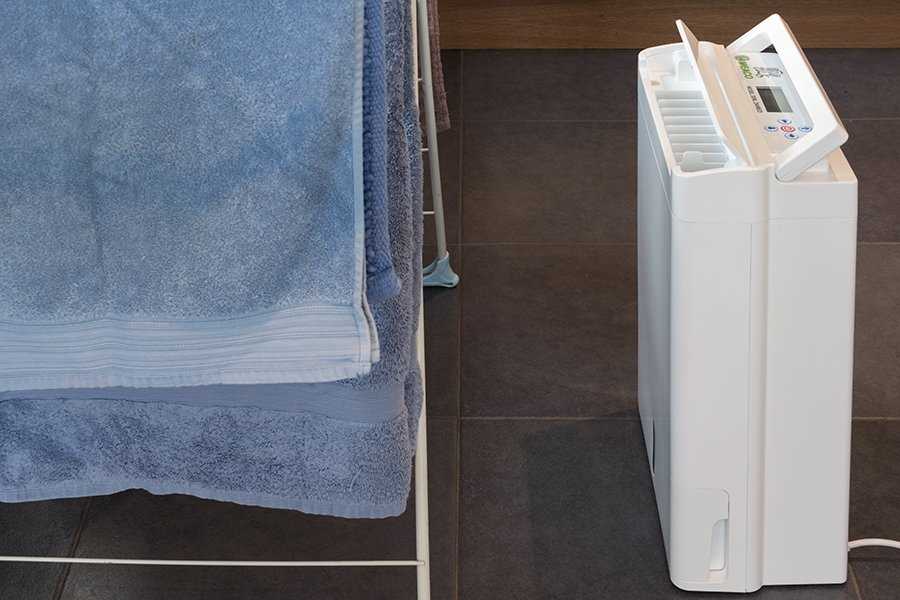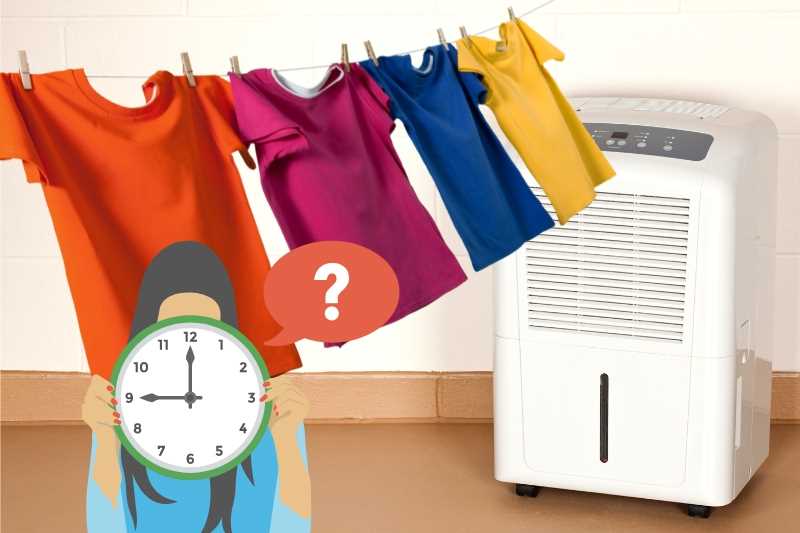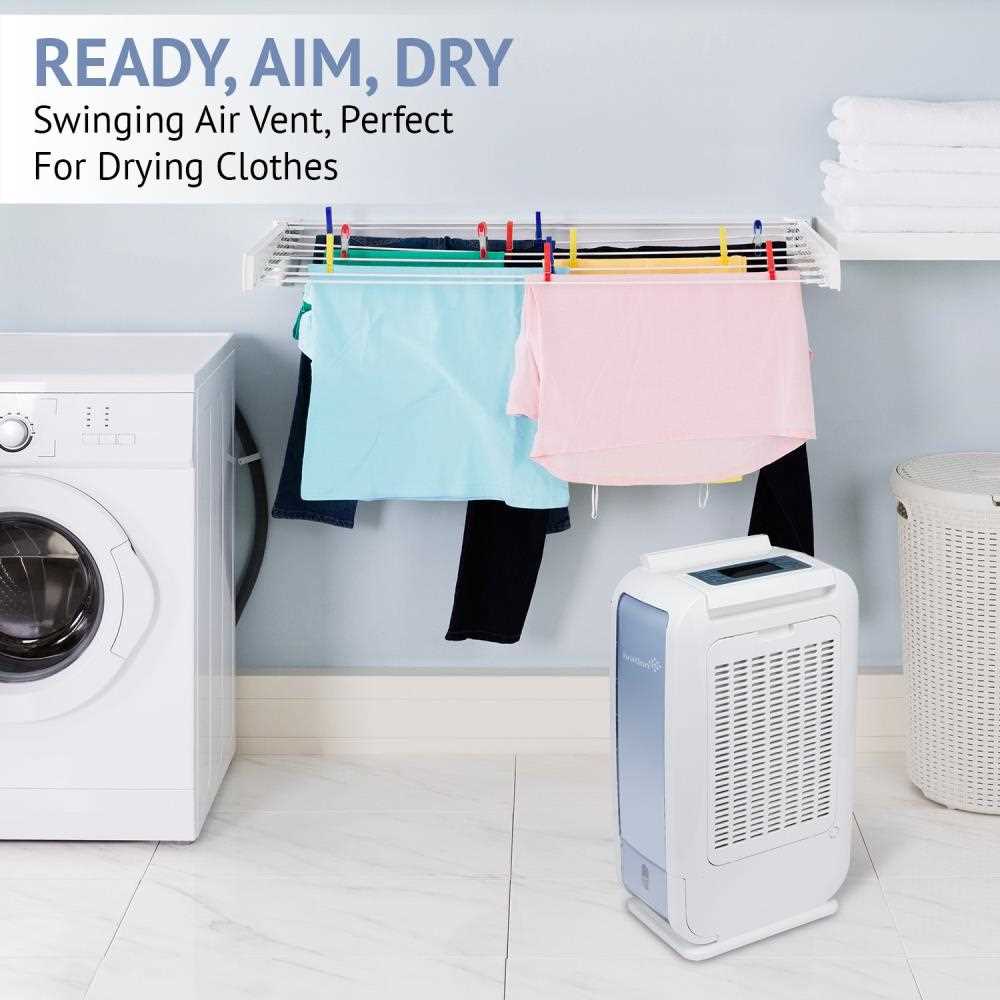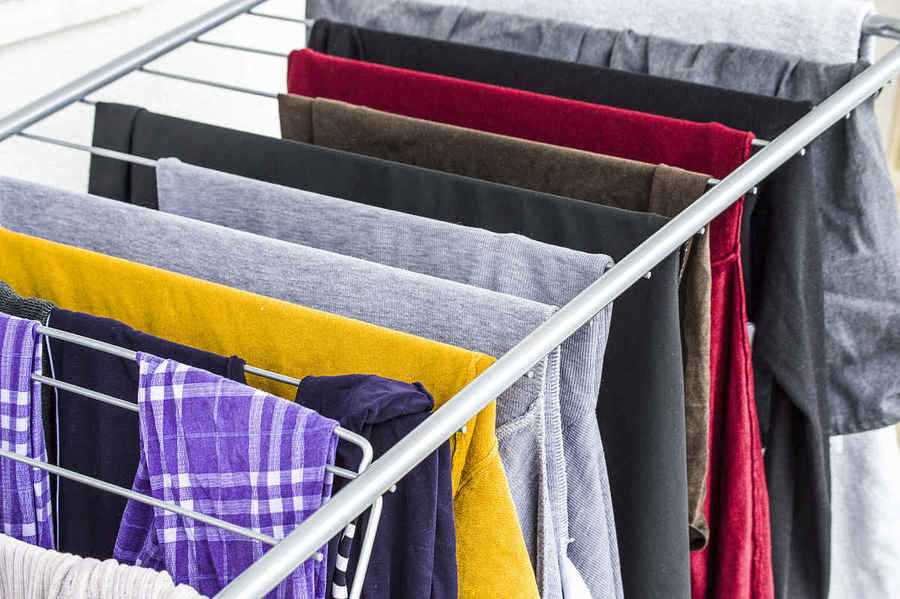




Have you ever wondered if you can use a dehumidifier to dry your clothes? If so, you’re not alone. Many people are curious about whether or not a dehumidifier can be a helpful tool in the laundry room. In this ultimate guide, we’ll answer the burning question: how long does it take to dry clothes with a dehumidifier?
First, let’s start by explaining how a dehumidifier works. A dehumidifier is a device that removes excess moisture from the air, reducing the humidity level in a room. This process helps prevent mold, mildew, and musty odors. But can it also help dry your clothes?
The answer is yes, a dehumidifier can indeed help speed up the drying process for your clothes. By using a dehumidifier in combination with proper ventilation, you can significantly reduce the time it takes for your clothes to dry. In fact, some people report that their clothes dry up to 50% faster when using a dehumidifier.
So, how long does it actually take to dry clothes with a dehumidifier? The exact time can vary depending on several factors, such as the humidity level in the room, the size of the load, and the type of fabric. In general, though, you can expect your clothes to dry anywhere from 20% to 40% faster when using a dehumidifier.
However, it’s important to note that a dehumidifier alone may not be enough to fully dry your clothes. It’s always best to combine it with other drying methods, such as hanging the clothes on a drying rack or using a clothesline. By utilizing multiple methods, you can ensure that your clothes dry in the most efficient and quickest way possible.
Now that you know how long it takes to dry clothes with a dehumidifier, let’s discuss some tips to speed up the process even further. First, make sure to spin your clothes in the washing machine at a higher speed. This will remove more water from the clothes before they even enter the drying process. Additionally, you can use a fan or open a window to increase airflow in the room, which will help evaporate the moisture more quickly. Finally, consider purchasing a dehumidifier with a higher extraction rate, as this will allow it to remove more moisture from the air in a shorter amount of time.
In conclusion, a dehumidifier can be a useful tool in speeding up the drying process for your clothes. By combining it with other drying methods and implementing some simple tips, you can significantly reduce the time it takes for your clothes to be ready to wear.
Section 1: Understanding the Drying Process

When it comes to drying clothes with a dehumidifier, it’s important to understand the basic process. While a dehumidifier can help remove moisture from the air, it does not actively dry clothes like a traditional dryer. Instead, it creates an environment that speeds up the evaporation process, allowing clothes to dry faster.
How does a dehumidifier work?
A dehumidifier works by pulling in air from its surroundings and removing excessive moisture from that air. The air is passed through a cooling coil, where moisture condenses, forming droplets. These droplets then collect in a reservoir or are drained away. The dehumidifier then releases the dry air back into the room.
Why use a dehumidifier to dry clothes?

Using a dehumidifier to dry clothes offers several advantages. First, it can help reduce the overall drying time, especially in humid environments where clothes can take longer to dry naturally. Second, it helps prevent the growth of mold and mildew, which thrive in damp conditions. Additionally, using a dehumidifier can help improve indoor air quality, as it removes excess moisture and associated odors.
The role of humidity and temperature
The efficiency of a dehumidifier in drying clothes depends on the humidity and temperature levels in the room. Higher humidity levels make it harder for moisture to evaporate, thereby increasing drying time. Therefore, it’s important to ensure that the room where the clothes are drying is well-ventilated to allow the evaporation process to occur effectively.
Speeding up the drying process
While a dehumidifier can accelerate the drying process, there are a few additional steps you can take to speed it up further. First, make sure to wring out any excess water from the clothes before hanging them up. This will help reduce the overall moisture content and allow the dehumidifier to work more efficiently. Second, consider placing a fan near the hanging clothes. The air circulation created by the fan will enhance evaporation. Finally, try to choose a warm location to hang the clothes, as higher temperatures also aid in drying.
By understanding the drying process and implementing these tips, you can effectively use a dehumidifier to dry clothes more quickly and efficiently.
Section 2: Factors Affecting Drying Time

- Humidity Levels: The humidity level in the room where you are drying your clothes plays a significant role in determining the drying time. Higher humidity levels will make it harder for moisture to evaporate from the clothes, thus prolonging the drying process.
- Room Temperature: The temperature in the drying area also affects the drying time. Higher temperatures will help speed up evaporation and therefore reduce drying time, while lower temperatures will slow down the process.
- Clothing Material: Different materials have different absorption and evaporation rates. Fabrics like cotton tend to hold more moisture and take longer to dry, while synthetic materials like polyester usually dry faster. Consider the fabric composition when estimating the drying time.
- Clothing Thickness: Thicker clothing items, such as jeans or sweatshirts, will generally take longer to dry compared to lightweight garments like t-shirts or thin dresses. The thickness of the fabric layers affects the time it takes for moisture to evaporate.
- Clothing Size: The size of the clothing items also impacts the drying time. Larger items will hold more moisture and take longer to dry compared to smaller ones.
- Amount of Moisture: The initial moisture content of the clothes can affect the drying time as well. Clothes that are very wet will obviously take longer to dry compared to those that are only slightly damp.
- Dehumidifier Capacity: The capacity of the dehumidifier you are using also plays a role. Higher-capacity dehumidifiers can extract moisture from the air more efficiently, reducing overall drying time.
- Drying Area: The size and ventilation of the drying area can influence drying time. A well-ventilated area allows for better airflow, aiding in the evaporation process and speeding up drying. Conversely, a small or poorly ventilated space can trap moisture and extend drying time.
Considering these factors can help you estimate the drying time for your clothes when using a dehumidifier. It is important to note that these factors are interrelated, and adjusting one factor may affect others. Experimenting with different settings and conditions can help you find the most efficient way to dry your clothes with a dehumidifier.
Section 3: Average Drying Time with a Dehumidifier
When using a dehumidifier to dry clothes, the time it takes for them to dry will depend on several factors. These factors include the humidity level of the room, the size and thickness of the clothes, and the capacity and efficiency of the dehumidifier. While there is no exact formula for determining the exact drying time, there are some average estimates that can give you an idea of what to expect.
1. Humidity Level
The higher the humidity level in the room, the longer it will take for the clothes to dry. If the humidity level is very high, it can hinder the evaporation process and prolong the drying time. It is recommended to use a dehumidifier to maintain a humidity level between 40% and 50% for optimal drying conditions.
2. Size and Thickness of Clothes
The size and thickness of clothes can also affect the drying time. Thicker fabrics, such as towels and jeans, will naturally take longer to dry compared to lighter fabrics like t-shirts or socks. Additionally, larger items will require more time to dry than smaller ones. It is best to separate clothes based on thickness and size to optimize the drying process.
3. Dehumidifier Capacity and Efficiency

The capacity and efficiency of the dehumidifier will play a significant role in the drying time. A dehumidifier with a higher capacity will remove moisture from the air more quickly, speeding up the drying process. Likewise, a more efficient dehumidifier will be able to extract more moisture from the air in a shorter amount of time. It is recommended to choose a dehumidifier with adequate capacity and efficiency for the size of the room and the amount of laundry being dried.
Based on these factors, the average drying time with a dehumidifier can range from a few hours to a full day. It is important to check the clothes periodically during the drying process to avoid over-drying or under-drying. Air circulation in the room, such as using fans, can also help speed up the drying time by facilitating evaporation.
Remember that these are just average estimates, and the actual drying time may vary depending on the specific conditions of your laundry room and the dehumidifier you are using.
Section 4: How to Speed up the Drying Process
While a dehumidifier can effectively dry clothes, there are several ways to speed up the drying process:
1. Increase air circulation

By increasing air circulation, you can help to evaporate moisture faster. You can achieve this by using a fan or opening windows and doors to allow fresh air to circulate in the room.
2. Use a higher fan speed

If your dehumidifier has adjustable fan speeds, set it to the highest setting. This will help to expel moist air more quickly and increase the drying speed.
3. Separate the clothes
Separating the clothes and spreading them out on a drying rack or clothesline can help to increase their exposure to the dehumidifier’s drying effect. Avoid overcrowding clothes, as this can slow down the drying process.
4. Pre-dry excess moisture
If your clothes are excessively wet, you can pre-dry them by using a towel or wringing them out before placing them near the dehumidifier. This will help to remove excess moisture and speed up the overall drying time.
5. Adjust the temperature
Warmer temperatures can help to accelerate the drying process. If possible, try to increase the room temperature or place the dehumidifier in a warmer location.
6. Optimize dehumidifier settings
Make sure your dehumidifier settings are properly adjusted for the drying process. Select a higher humidity level and check that the water tank is empty to ensure the dehumidifier is functioning optimally.
7. Regularly clean the dehumidifier
Regularly cleaning your dehumidifier can help to maintain its efficiency. Dust and debris can accumulate on the coils, reducing their effectiveness. Ensure the unit is clean and well-maintained to ensure the fastest drying speed.
By following these tips, you can speed up the drying process and ensure your clothes dry efficiently with the help of a dehumidifier.
FAQ
How does a dehumidifier help in drying clothes?
A dehumidifier helps in drying clothes by reducing the moisture in the air. It absorbs excess humidity, which in turn speeds up the drying process of wet clothes.
Does using a dehumidifier make clothes dry faster?
Yes, using a dehumidifier can make clothes dry faster. By removing excess moisture from the air, the dehumidifier creates an environment conducive to drying clothes quickly.
How long does it take to dry clothes with a dehumidifier?
The drying time with a dehumidifier can vary depending on several factors such as the humidity level in the room, the size of the clothes, and the efficiency of the dehumidifier. On average, it might take around 2-4 hours to dry clothes with the help of a dehumidifier.
Are there any tips to speed up the clothes drying process with a dehumidifier?
Yes, there are some tips to speed up the clothes drying process with a dehumidifier. Firstly, make sure to spin-dry the clothes before placing them in the room with the dehumidifier. This will remove excess water from the fabric. Additionally, you can also increase the airflow in the room by using a fan or opening windows, as this will help in faster evaporation of moisture.
Can a dehumidifier be used to dry all types of clothes?
Yes, a dehumidifier can be used to dry all types of clothes. However, it is important to follow the manufacturer’s instructions and recommendations for each specific type of fabric. Some delicate fabrics may require lower humidity levels or shorter drying times to avoid damage.












